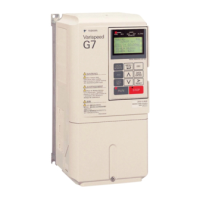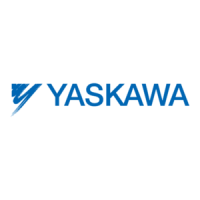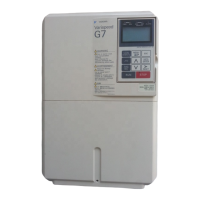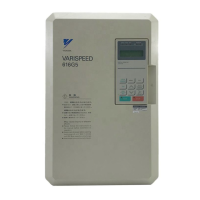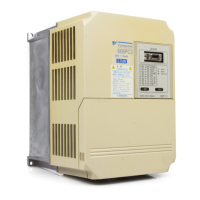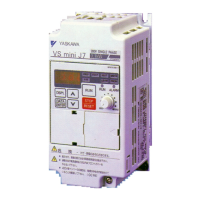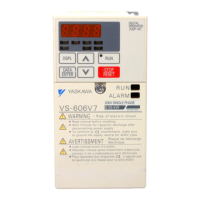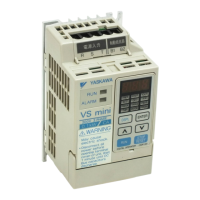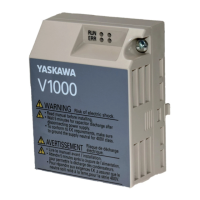5
-2
User Constant Descriptions
This section describes the contents of the user constant tables.
Description of User Constant Tables
User constant tables are structured as shown below. Here, b1-01 (Frequency Reference Selection) is used as an
example.
Con-
stant
Number
Name
Description
Setting
Range
Factory
Setting
Change
during
Opera-
tion
Control Methods
MEMO-
BUS
Regis-
ter
Page
V/f
V/f
with
PG
Open
-loop
Vec-
tor
1
Flux
Vec-
tor
Open
Loop
Vec-
tor
2
Display
b1-01
Reference
selection
Set the frequency reference
input method.
0: Digital Operator
1: Control circuit terminal
(analog input)
2: MEMOBUS communi-
cations
3: Option board
4: Pulse train input
0 to 4 1 No QQQQQ180H–
Reference
Source
• Constant Number: The number of the user constant.
• Name: The name of the user constant.
• Description: Details on the function or settings of the user constant.
• Setting Range: The setting range for the user constant.
• Factory Setting: The factory setting (each control method has its own factory setting.
Therefore the factory setting changes when the control method is
changed.)
Refer to page 5-90 for factory settings by control method.
• Change during Operation: Indicates whether or not the constant can be changed while the
Inverter is in operation.
Yes: Changes possible during operation.
No: Changes not possible during operation.
• Control Methods: Indicates the control methods in which the user constant can be moni-
tored or set.
Q: Items which can be monitored and set in either quick program-
ming mode or advanced programming mode.
A: Items which can be monitored and set only in advanced pro-
gramming mode.
No: Items which cannot be monitored or set for the control method.
• MEMOBUS Register: The register number used for MEMOBUS communications.
• Page: Reference page for more detailed information on the constant.
TOE-S616-60.1.book 2 ページ 2017年8月4日 金曜日 午後3時41分
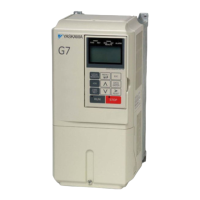
